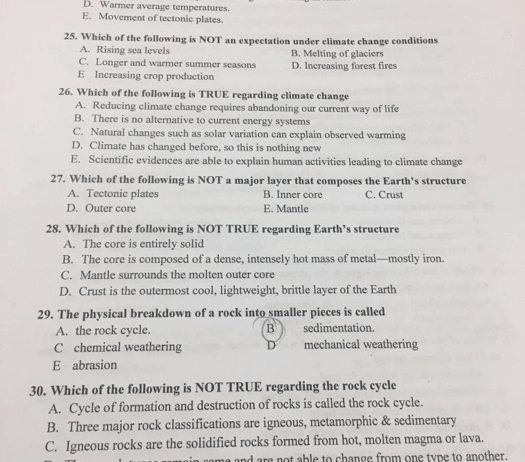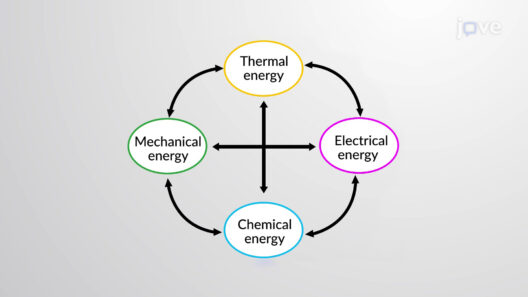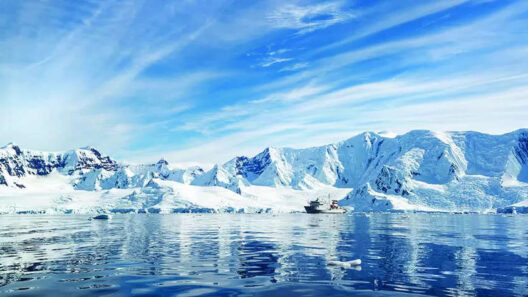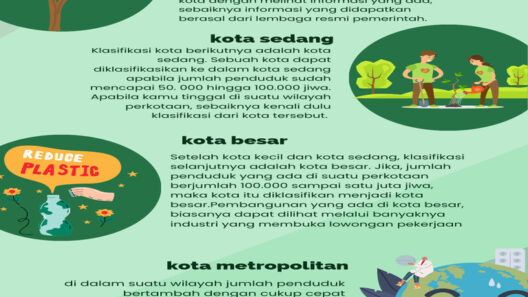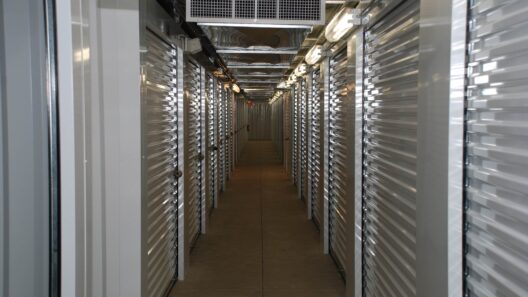Climate change is a multifaceted phenomenon, often shrouded in complexity and nuance. Yet, it is crucial to unravel its various implications on our planet. As we delve into this subject, one may pose a curious question: “Which of these is unlikely to result from climate change?” The answer requires a deep examination of the intricacies of climate dynamics, human interaction with the environment, and the potential outcomes of our current trajectory.
To engage effectively with this query, it is imperative to first understand what climate change encompasses. Essentially, climate change refers to significant alterations in temperature, precipitation, wind patterns, and other elements of the Earth’s climate system. These changes are primarily fueled by the proliferation of greenhouse gases such as carbon dioxide and methane, largely due to human activities like burning fossil fuels, deforestation, and industrial processes.
As the planet warms, we witness a plethora of environmental alterations. Some of these alterations are direct consequences of climate change, while others are indirect. Let’s delineate the likely repercussions of climate change before addressing what seems less probable.
One of the most apparent effects of climate change is the increase in global temperatures. Rising temperatures lead to more frequent and severe heatwaves, which can devastate ecosystems and endanger public health. This extreme heat not only harms humans but also disrupts animal behavior and habitats, leading to altered migration patterns and potential extinction for vulnerable species.
In tandem with temperature fluctuations, we also observe changing precipitation patterns. Some regions experience torrential downpours and flooding, while others suffer from prolonged droughts. This erratic climate behavior disrupts agriculture, impacting food security and driving economic instability. Additionally, water resources become increasingly strained, particularly in arid regions, escalating the risk of conflict over dwindling supplies.
Another notable outcome of climate change is the acceleration of sea-level rise. Melting glaciers and polar ice caps are contributing to this gradual inundation of coastal areas. This phenomenon not only submerges land but prompts mass displacement of communities, leading to climate refugees—a term that underscores the human toll of environmental change. Urban planners and governments must grapple with the challenge of safeguarding infrastructure and populations against this relentless encroachment.
Moreover, shifting climatic conditions have a direct influence on biodiversity. As habitats become inhospitable, species face the daunting challenge of adapting, migrating, or facing extinction. The intricate web of life on our planet is at risk as ecosystems struggle to cope with the rapid pace of change. Coral reefs, for instance, are particularly vulnerable to thermal stress and ocean acidification, resulting in widespread bleaching and loss of marine biodiversity.
Despite the overwhelming evidence of climate change’s impacts, the question remains—what is less likely to emerge as a result of climate change? To address this, it is crucial to assess some common misconceptions or exaggerations surrounding climate-related outcomes. For instance, while urban areas are anticipated to experience more severe weather conditions, the idea that all urban centers will face catastrophic consequences in an equal measure may be far-fetched.
Let’s consider the notion that climate change will uniformly catastrophize urban lifestyles. While it is true that cities are prone to flooding and heat extremes, some are implementing innovative adaptation strategies. Cities investing in green infrastructure—such as parks, green roofs, and permeable pavements—can mitigate urban heat islands and manage stormwater. This means that resilience can be built while minimizing detrimental effects.
Similarly, while food production systems are under threat from extreme weather, the idea that global food shortages will manifest overnight is unlikely. The agricultural sector possesses the capacity for innovation, enabling the development of climate-resilient crops and more sustainable farming practices. Thus, while challenges abound, the human ability to innovate and adapt serves as a formidable buffer against some of the dire predictions associated with climate change.
Furthermore, another debunked misconception suggests that climate change will lead to a global population collapse. Although extreme weather events may pose significant risks to health and livelihoods, large-scale demographic decline is not the immediate outcome. With global aging populations, urban migration, and varied socio-economic responses, population dynamics are largely influenced by a myriad of factors beyond climate. Public health interventions and adaptive strategies may counterbalance adverse effects, preserving human populations despite environmental challenges.
In conclusion, navigating the labyrinth of climate change requires discernment and a commitment to evidence. While many negative repercussions are indeed attributable to the changing climate, some outcomes may be exaggerated or even unlikely. The interplay between human experience and environmental shifts suggests that while risks are omnipresent, human ingenuity and adaptability can forge pathways of resilience.
Ultimately, the key lies in acknowledging our role in shaping the outcomes of climate change. Engaging in sustainable practices, fostering technological innovations, and advocating for collective action are pivotal steps. As we confront the ill effects of climate change, let’s not lose sight of the potential for positive change that resides within our collective capacity. Through informed decision-making and strategic planning, we can navigate the future with assurance while minimizing the unlikely consequences.



